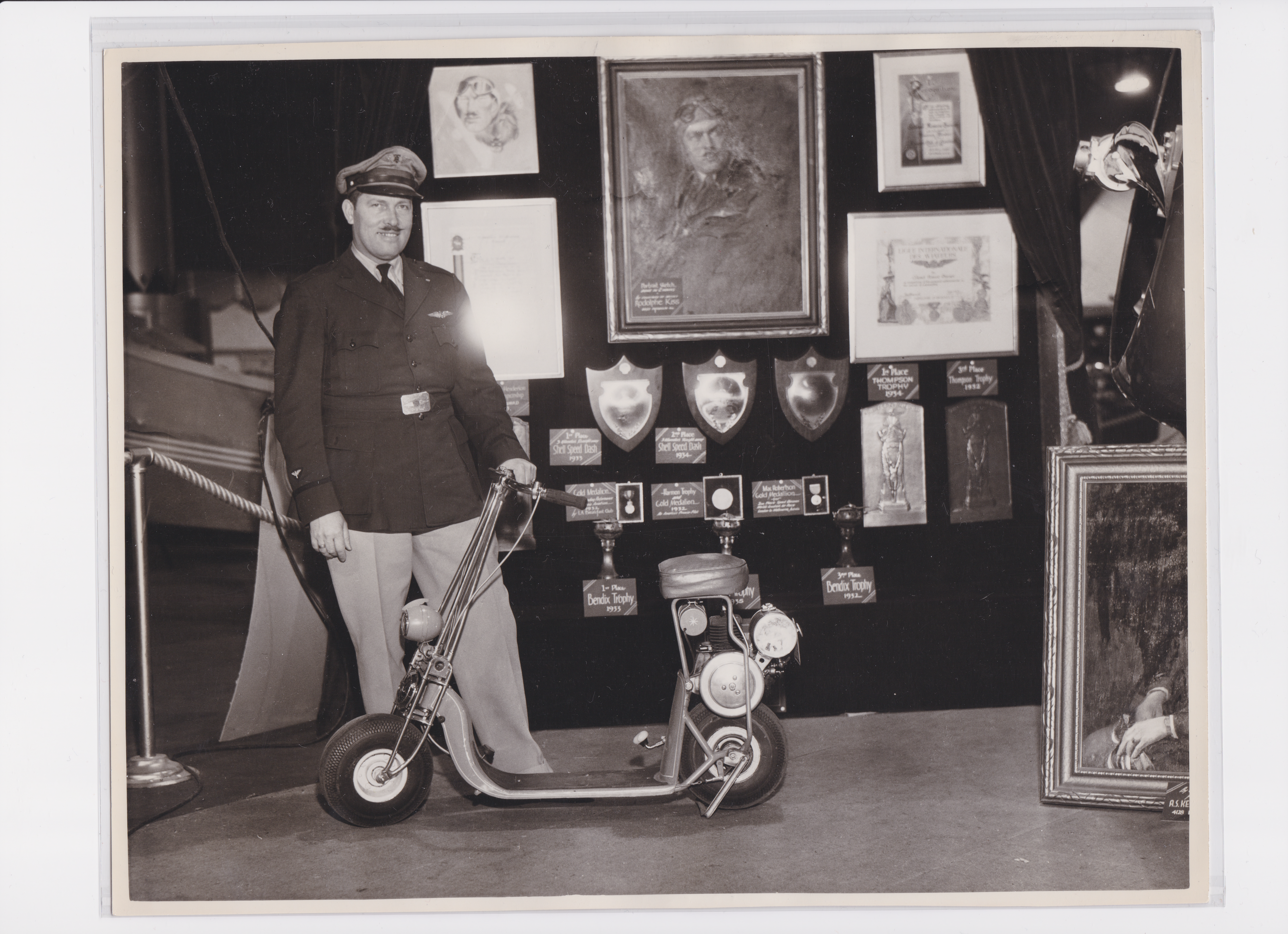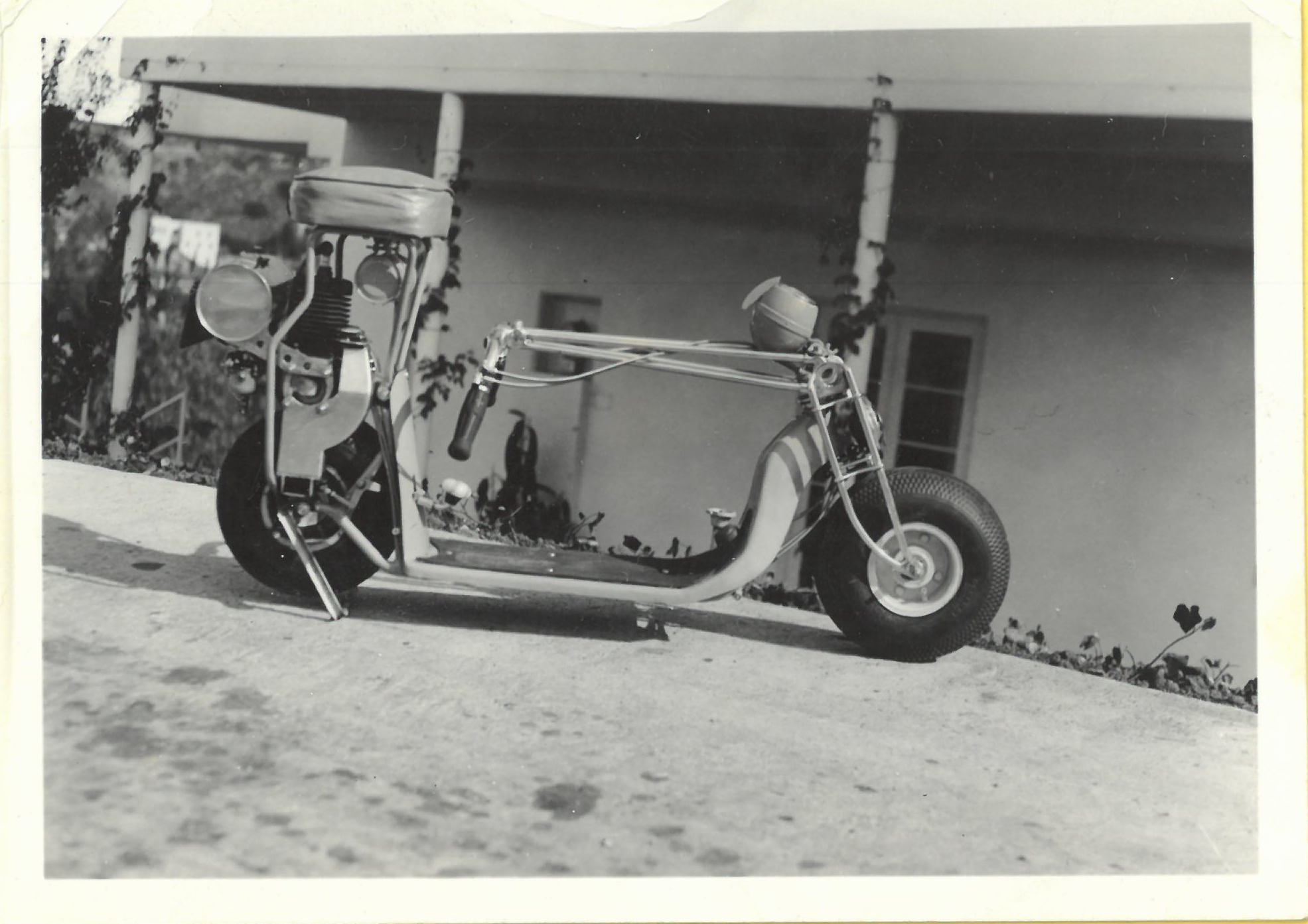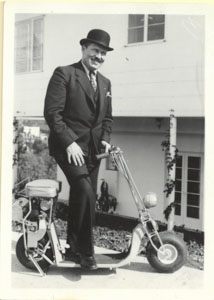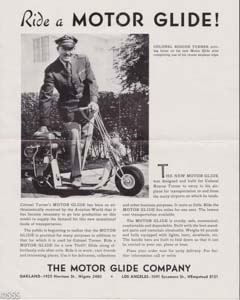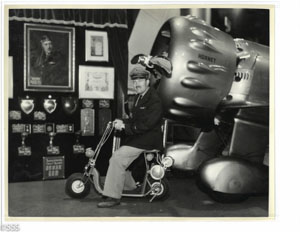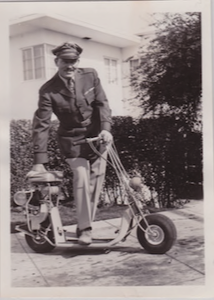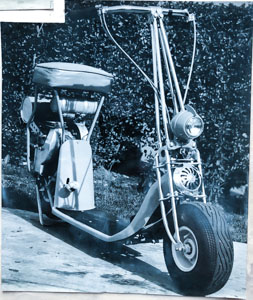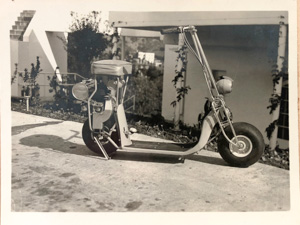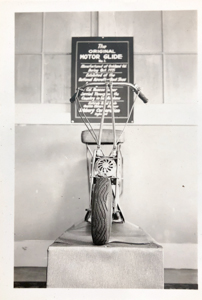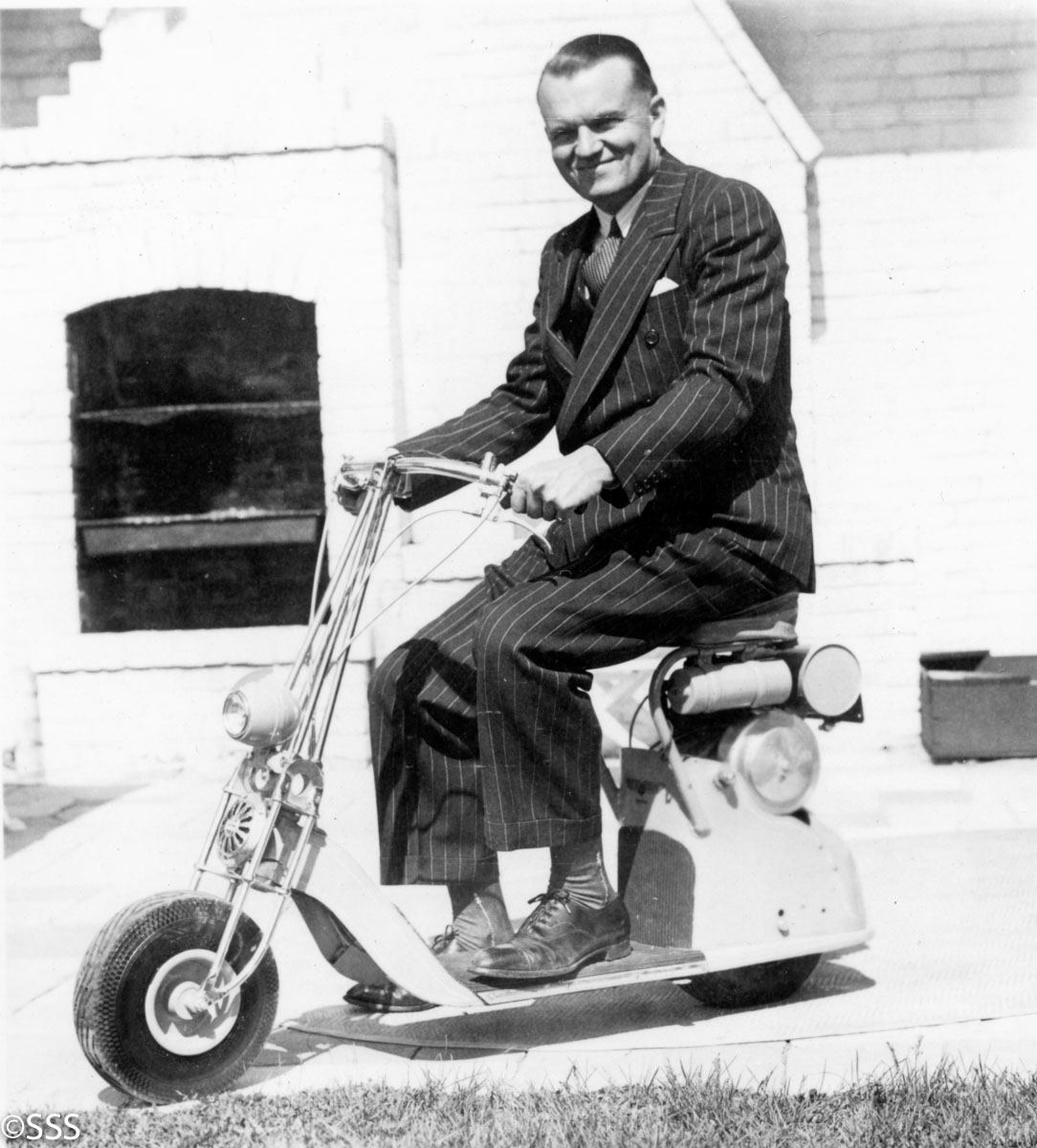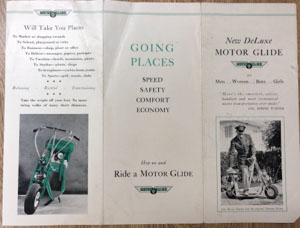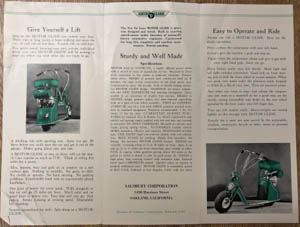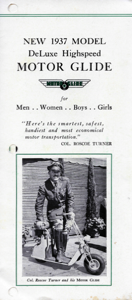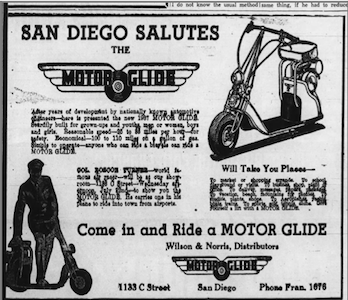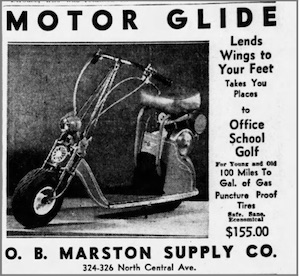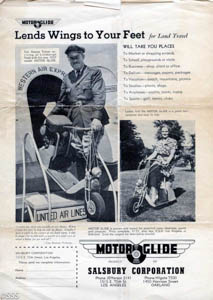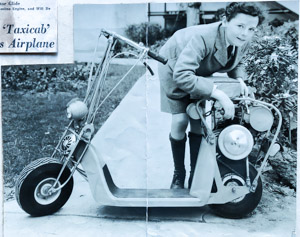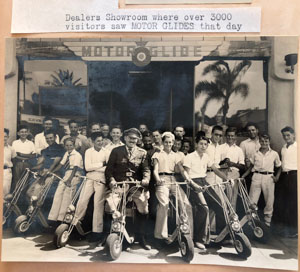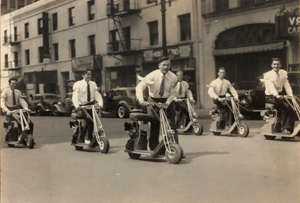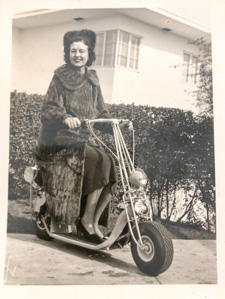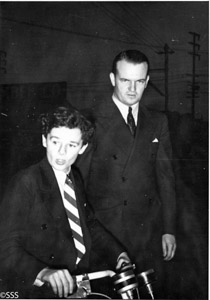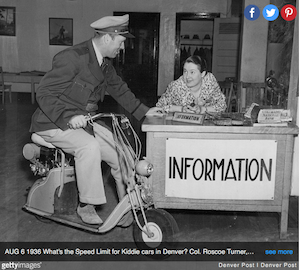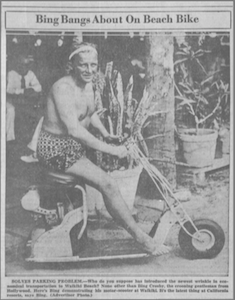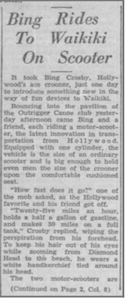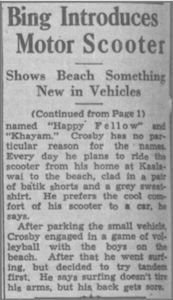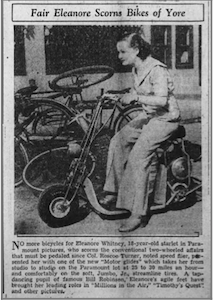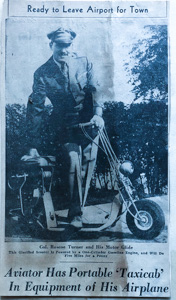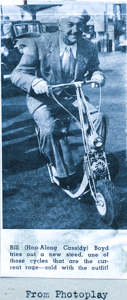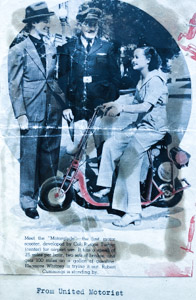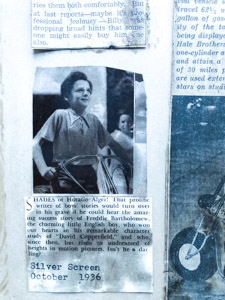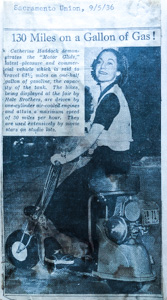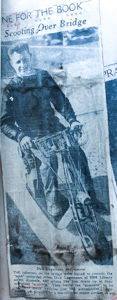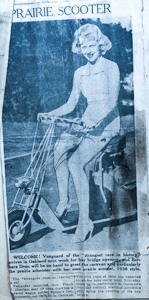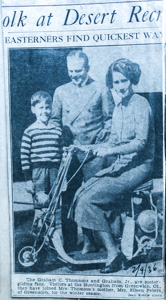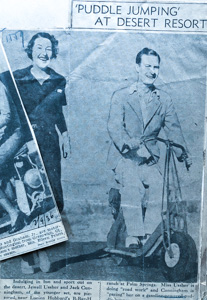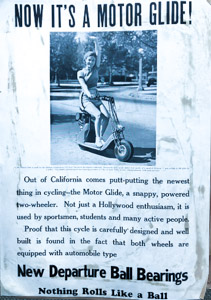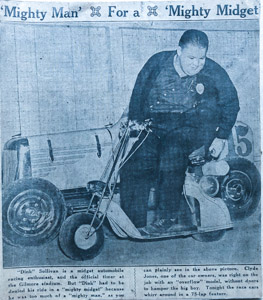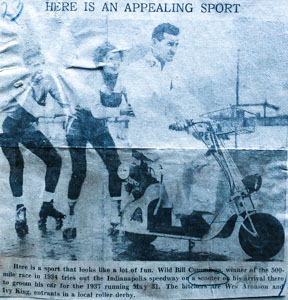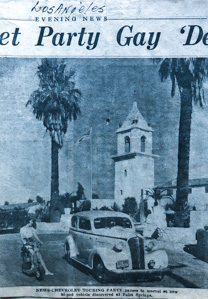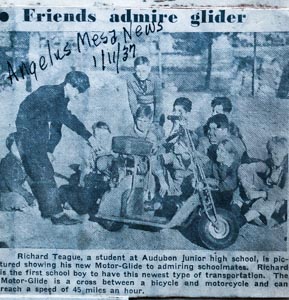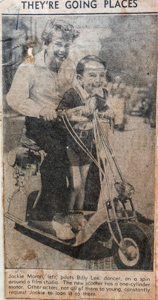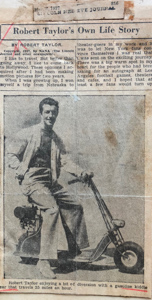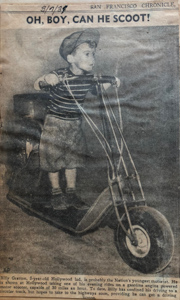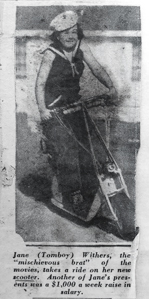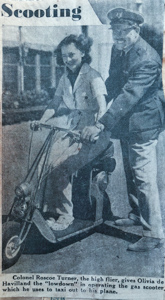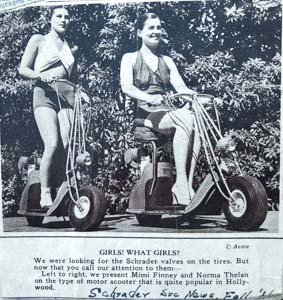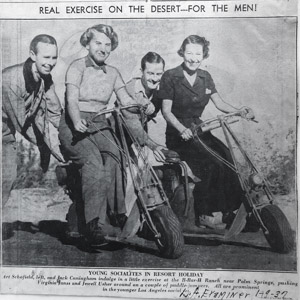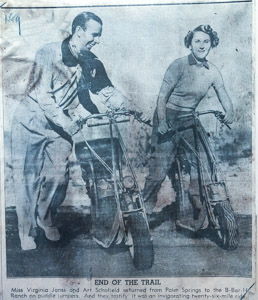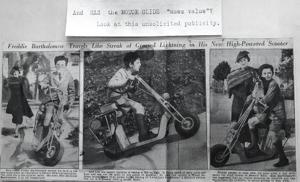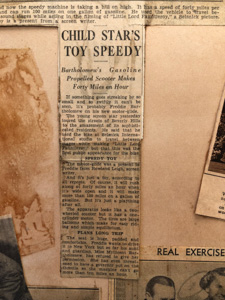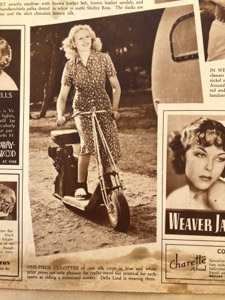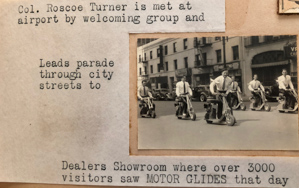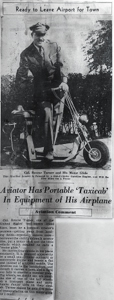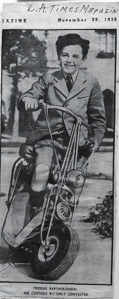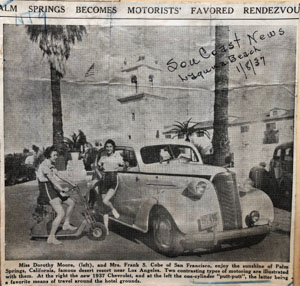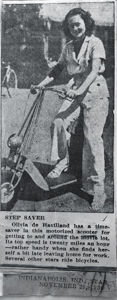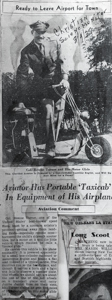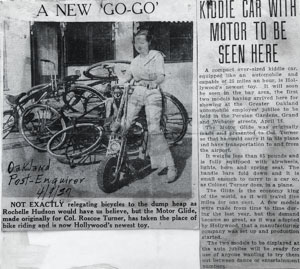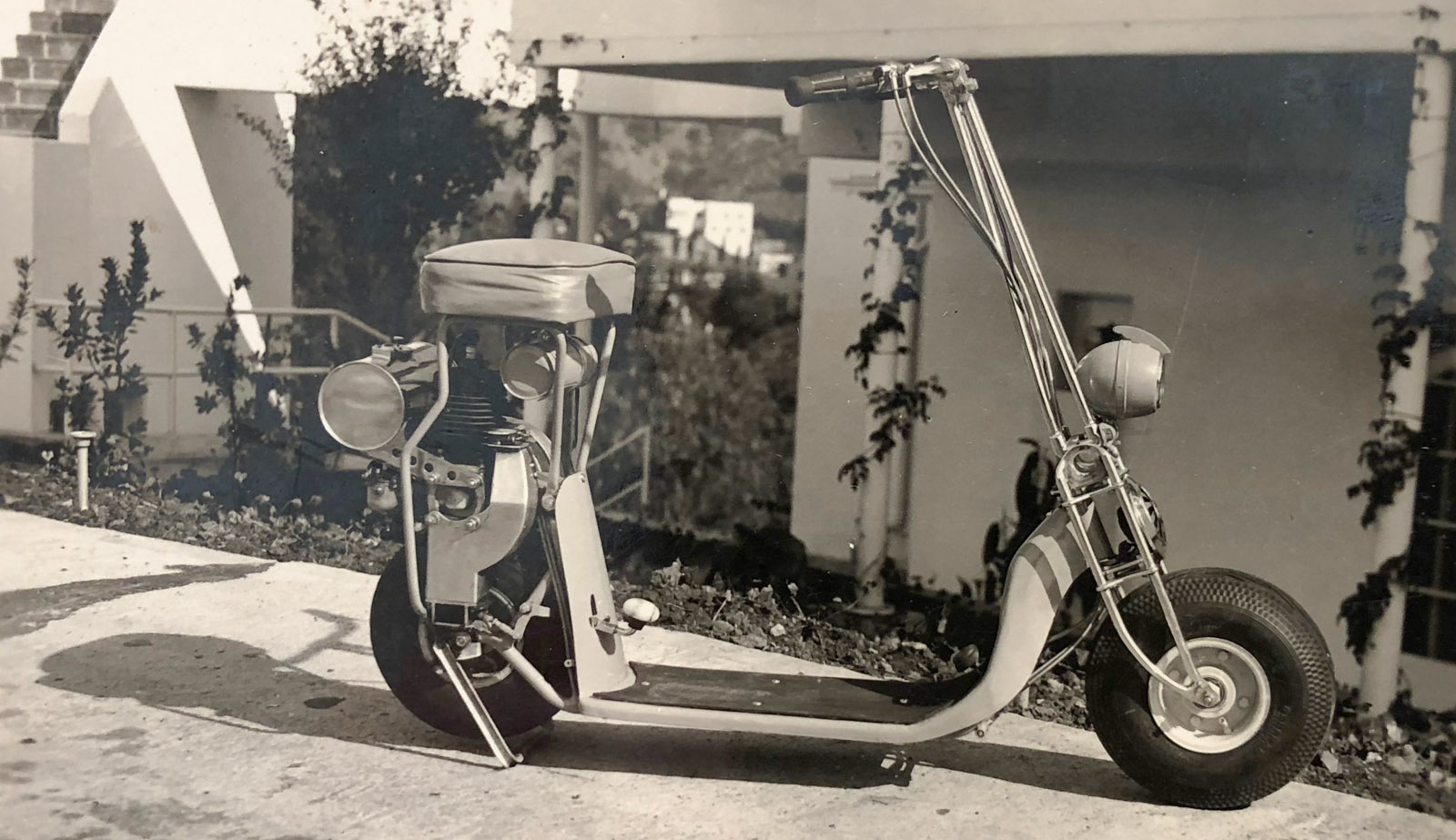
The Original Motor Glides - 1935 to 1937
Watching Amelia Earhart ride a scooter at the Oakland CA airport in 1935 inspired Foster to create a commercial version of Amelia's scooter. Foster evolved and commercialized scooters to such an extent that Foster is generally credited with creating the first modern era scooter - a design that to this day is still used by Vespa.
After seeing Amelia at the airport, Foster enlisted the help of an Oakland-based inventor, Austin Elmore, to bring Foster's vision of a scooter to life. Working with Austin, Foster created a very practical prototype of his motor scooter by late 1935. Foster had this prototype with him when Foster ran into his friend Roscoe Turner, a famous aviator, at the National Airplane and Boat Show in LA in February 1936. Foster, who often flew to out of the way airports, immediately spotted the utility of the little scooter. Roscoe grabbed the scooter and used it in his display at the Show. The scooter generated a real buzz at the show, which motivated Foster and Roscoe to team up and commercialize the scooter.
The Pre-Production Motor Glides - Late 1935 to Early 1936
Foster gave the first Motor Glide produced to Roscoe Turner, who displayed the scooter at the National Airplane and Boat Show in LA in Feb 1936 as shown by the picture to the right (click on the pic for a full size view). The scooter was an instant hit.
The scooter weighed 65 pounds. You would start the scooter with a push start - push the scooter and then hop on when the engine fired up!
The scooter had an Evinrude 2 cycle 5/8 hp engine, 5" wheels and General Jumbo Junior 3.5 x 12 tires. Rigid Suspension - no springs or shocks. Rear brake only - with the brake applied by a foot pedal
The first small run of prototype Motor Glides had folding handlebars and a friction roller drive system rather than a chain drive system. The roller system worked great, especially on dry days. Foster quickly went to a chain drive system after discovering the wet weather problem with the roller system.
The roller system had a major advantage over the chain system, however. When a chain based scooter came to a stop at a stop sign or a red light, the engine would stop turning and die. The rider would have to push start the scooter to get it going again.
With the roller system, the rider would press the back pedal in the picture, and the roller would lift up off the tire. Importantly, the roller could keep turning so the engine could continue to turn as well. When the rider wanted to move forward, the rider would reengage the roller and off he or she would go. No need to restart
Some additional pics and marketing materials showing the Pre-Production Motor Glide Scooter
The 1936 & 1937 Motor Glide DeLuxe with Chain Drive - The First Retail Version
Foster Salsbury on a circa 1936-1937 Motor Glide with the chain drive. This was the first production version of the scooter.
Since the chain was connected to both the engine and wheel, when the wheel stopped turning, the engine would stop turning as well (i.e., die). So the scooter would have to be restarted whenever the rider came to a stop (stop sign, light, etc). The rider would then have to push the scooter and hop on to restart the scooter. The compression in the engine made this somewhat difficult, so Foster installed a compression release apparatus. This apparatus, controlled by a lever on the handlebars, allowed the rider to release the compression in the engine before starting the scooter.
The major features of the production scooter: Evinrude 2 cycle engine, 5/8hp. No pedals. Back brake operated by fingertip lever on the left side. Gravity fed gas tank. Cruising speeds of 15 to 20mph. Top speeds of 25 to 35mph depending on weight of rider. Headlight and horn with juice provided by dry cell batteries.
Folding handlebars were discontinued in June 1936, but could be ordered as a special option.
The standard color was "high gloss jade green and Chinese red with attractive cream trim." Exposed metal was chrome plated.
Priced at $155
Click here to see some beautiful pics of a 1936 Motor Glide restored and owned by Jerry Perkins
How Many Original Motor Glides Did Foster Sell?
In an interview published by the Salsbury Restorer's Society (SRS) in Vol 62 (2018), Foster said he probably made 300 or so original Motor Glides.
A balance sheet and income state for a fiscal year ending on May 31, 1937 supports this estimate. The income statement reflects about $65,000 of receipts for June 1936 thru May 1937. These receipts would reflect sales of original Motor Glides, Aero's and parts. $65,000 of receipts would make sense if Foster sold 300 or so original Motor Glides and 300 or so Aero's during this period based on retail selling of $155 for the original Motor Glides and $119 for the Aero's, less dealer discounts.
The SRS only lists 3 original Motor Glides, and perhaps one more (a '37 that could be either an original or Aero).
Some Brochures, Advertisements, and Pictures Showing the1936 DeLuxe Motor Glide and 1937 DeLuxe Highspeed Motor Glide
Articles for the Original Motor Glide Found in Foster's Scrapbook
©Russ Uzes and Scott Doering/Contact Us
Russ and Scott are always looking for Salsbury Scooters - Motor Glides and Model 85s
We are also looking for Salsbury Scooter historical items - brochures, pictures, service manuals and other memorabilia
